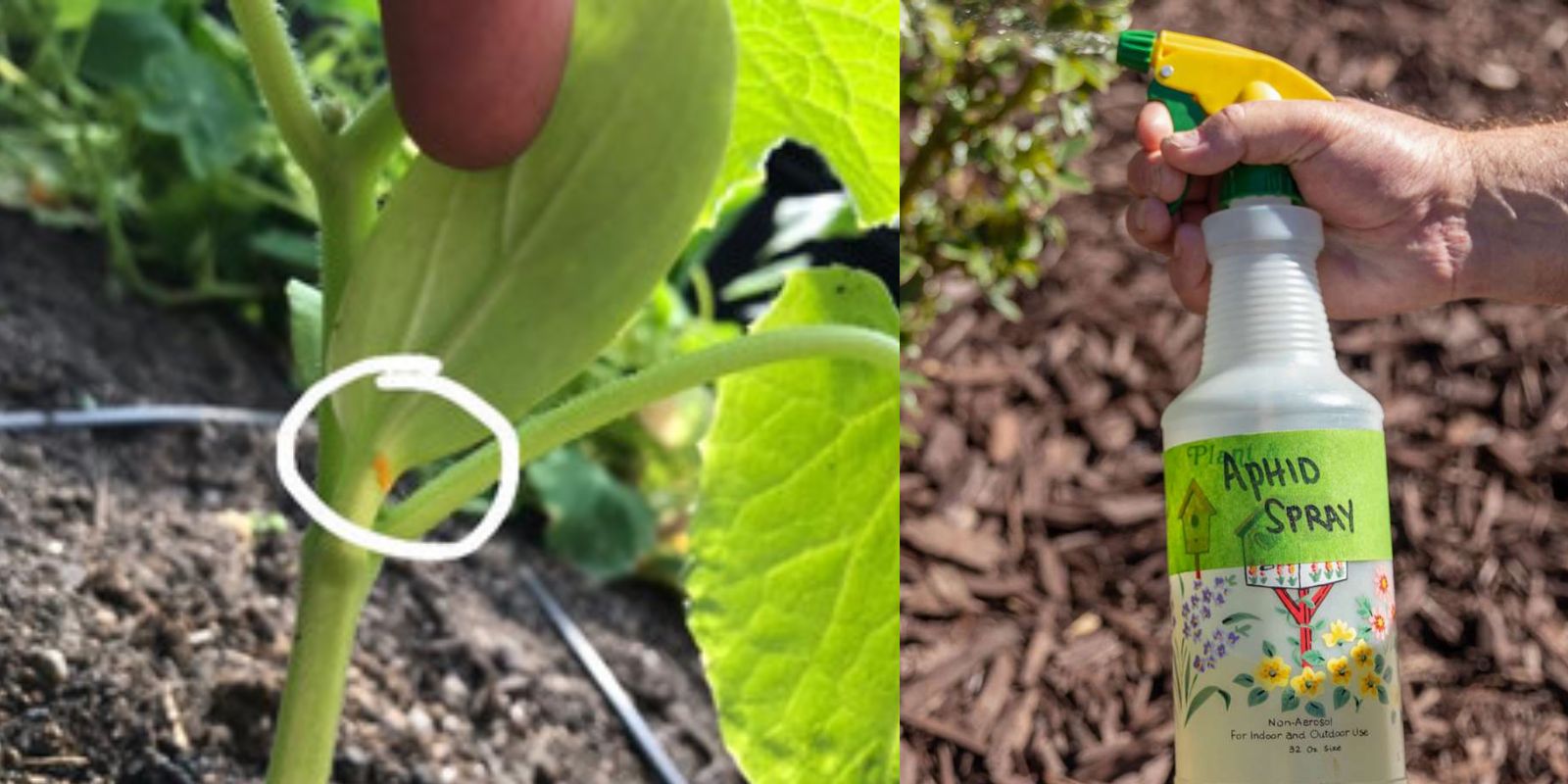Aphids can be a gardener’s nightmare. These tiny, sap-sucking pests can quickly infest plants, causing significant damage by draining nutrients, distorting growth, and spreading diseases. While many chemical pesticides are available, they can be harsh on the environment and may harm beneficial insects. Fortunately, garlic, a common kitchen staple, offers a natural and effective solution for managing aphid populations. This article will provide a comprehensive guide to using garlic as an aphid remedy, including preparation, application, and benefits.
The Power of Garlic in Pest Control
Garlic (Allium sativum) has been used for centuries not only as a culinary ingredient but also for its medicinal properties. Its strong odor and natural compounds, particularly allicin, are known to repel and deter pests. Allicin is a sulfur-containing compound that is released when garlic is crushed or chopped. This compound is toxic to many insects, including aphids, making garlic an effective and natural alternative to chemical pesticides.
Why Use Garlic for Aphids?
- Non-Toxic: Garlic is safe for humans, pets, and beneficial insects when used properly. It does not leave harmful residues on plants, making it suitable for organic gardening.
- Environmentally Friendly: Using garlic helps maintain ecological balance by avoiding synthetic chemicals that can disrupt the environment.
- Cost-Effective: Garlic is inexpensive and readily available, making it an accessible option for gardeners of all budgets.
- Versatility: Garlic can be used in various forms, such as sprays or infusions, and can target a range of pests beyond just aphids.
Steps to Prepare and Apply Garlic for Aphid Control
Step 1: Prepare Garlic Cloves
To make a garlic-based aphid remedy, start with fresh garlic cloves. Garlic should be crushed to release its essential oils, which are crucial for its pest-repelling properties.
- How to Crush Garlic: Place garlic cloves under the flat side of a knife blade and press down firmly until the cloves are crushed. Alternatively, use a garlic press to achieve the same result.
Step 2: Make the Garlic Solution
Combine the crushed garlic with water to create a garlic infusion. This solution will carry the garlic’s active compounds to your plants.
- Recipe for Garlic Solution:
- Crush 10-12 garlic cloves.
- Mix the crushed garlic with 2 cups of water in a bowl.
- Allow the mixture to sit for 24 hours to ensure the garlic infuses the water with its potent properties.
Step 3: Strain the Mixture
After the garlic has steeped, strain out the solid garlic pieces to leave only the liquid. This step ensures that the solution is free from any particles that might clog your spray bottle.
- How to Strain: Use a fine sieve, cheesecloth, or a coffee filter to separate the garlic solids from the liquid.
Step 4: Add Soap (Optional)
For better adhesion to plant surfaces, consider adding a few drops of mild liquid soap to the garlic solution. The soap acts as a surfactant, helping the solution stick to leaves and stems.
- Mixing Soap: Add 1 teaspoon of mild liquid soap to the strained garlic solution and mix well.
Step 5: Apply the Solution
Transfer the garlic solution into a spray bottle for easy application. Spraying the solution directly onto affected plants will help repel aphids and other pests.
- Application Tips:
- Spray thoroughly on the tops and undersides of leaves, stems, and any other areas where aphids are present.
- Apply in the early morning or late evening to avoid direct sunlight, which can cause the solution to dry out quickly.
Step 6: Reapply as Needed
Garlic’s effectiveness may diminish over time, especially after rain or heavy watering. Reapply the solution every 7-10 days to maintain its pest-repelling properties.
- Reapplication Frequency: Monitor your plants regularly and reapply the garlic solution as needed to keep aphid populations under control.
Additional Tips for Effective Aphid Control
- Combine with Other Methods: For severe infestations, use garlic in combination with other natural remedies like neem oil or insecticidal soap for enhanced effectiveness.
- Monitor Plant Health: Regularly check your plants for signs of aphid damage and address issues promptly to prevent further infestation.
- Encourage Beneficial Insects: Introduce or attract beneficial insects like ladybugs and lacewings that prey on aphids, providing an additional layer of pest control.
- Maintain Garden Hygiene: Keep your garden clean and free from debris, which can harbor aphids and other pests. Regularly remove dead or diseased plant material.
Benefits of Using Garlic for Aphid Control
- Safe for Edible Plants: Garlic is safe to use on vegetables, herbs, and fruits, making it an ideal choice for organic gardeners who grow their own food.
- Natural and Biodegradable: Unlike synthetic pesticides, garlic breaks down naturally and does not leave harmful residues in the soil or on plants.
- Cost-Effective Solution: Garlic is an affordable and readily available ingredient, making it accessible for gardeners on a budget.
- Easy to Prepare: The garlic solution is simple to make with minimal equipment, allowing gardeners to quickly address aphid problems.
Conclusion
Garlic is a potent and natural remedy for managing aphid infestations in your garden. By harnessing the power of this common kitchen ingredient, you can protect your plants from harmful pests while maintaining a healthy and eco-friendly garden. Follow the steps outlined above to prepare and apply garlic effectively, and enjoy the benefits of a pest-free garden without resorting to harsh chemicals.
Motivational Sentence
Take control of aphid infestations naturally with garlic—your plants and the environment will thank you! 🌱🧄 Share your garlic remedies and garden success stories with us! #OrganicGardening #AphidControl #NaturalPestRemedies #GarlicPower #EcoFriendlyGardening #HealthyPlants #GardeningTips #PestFreeGarden

